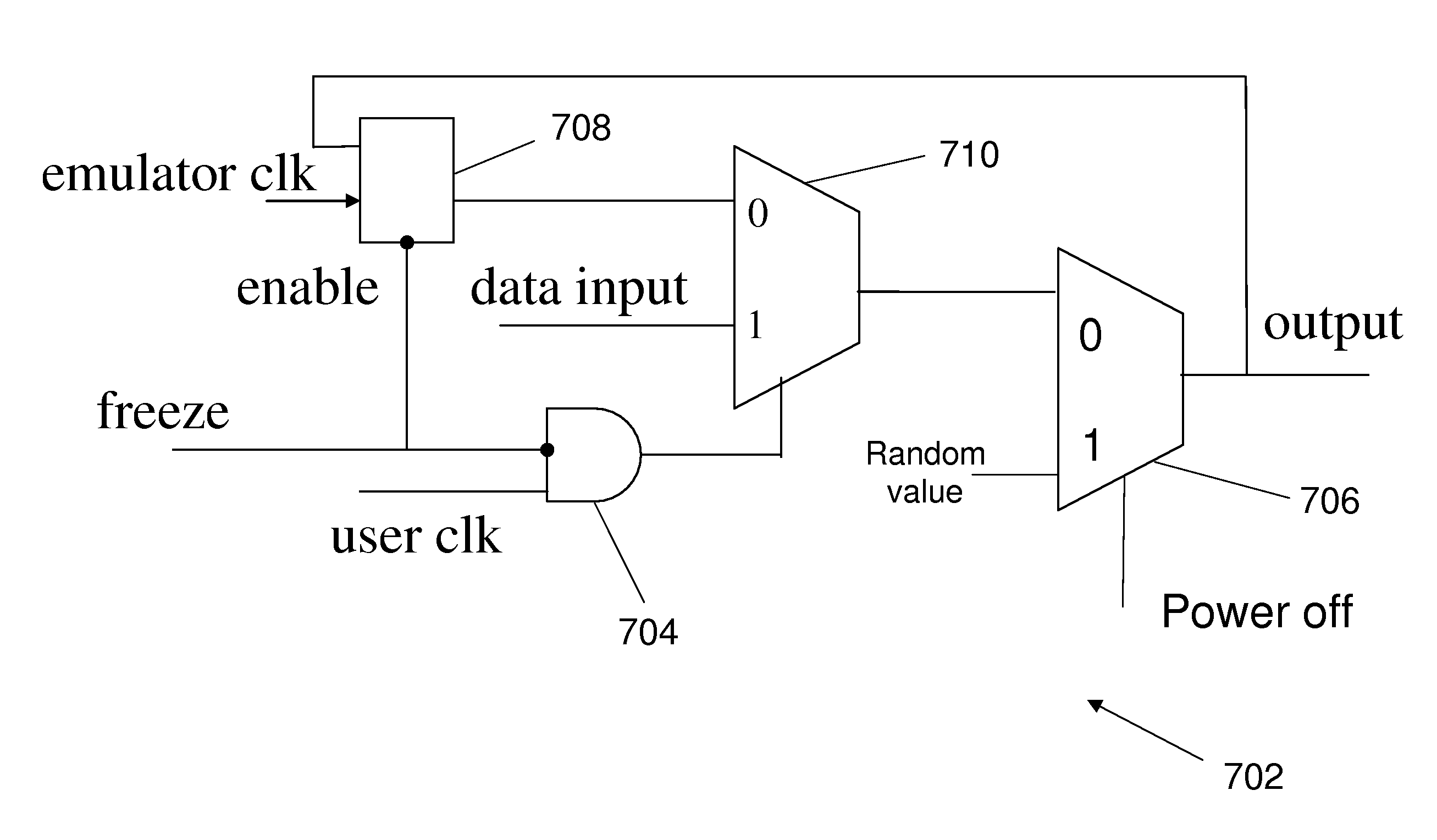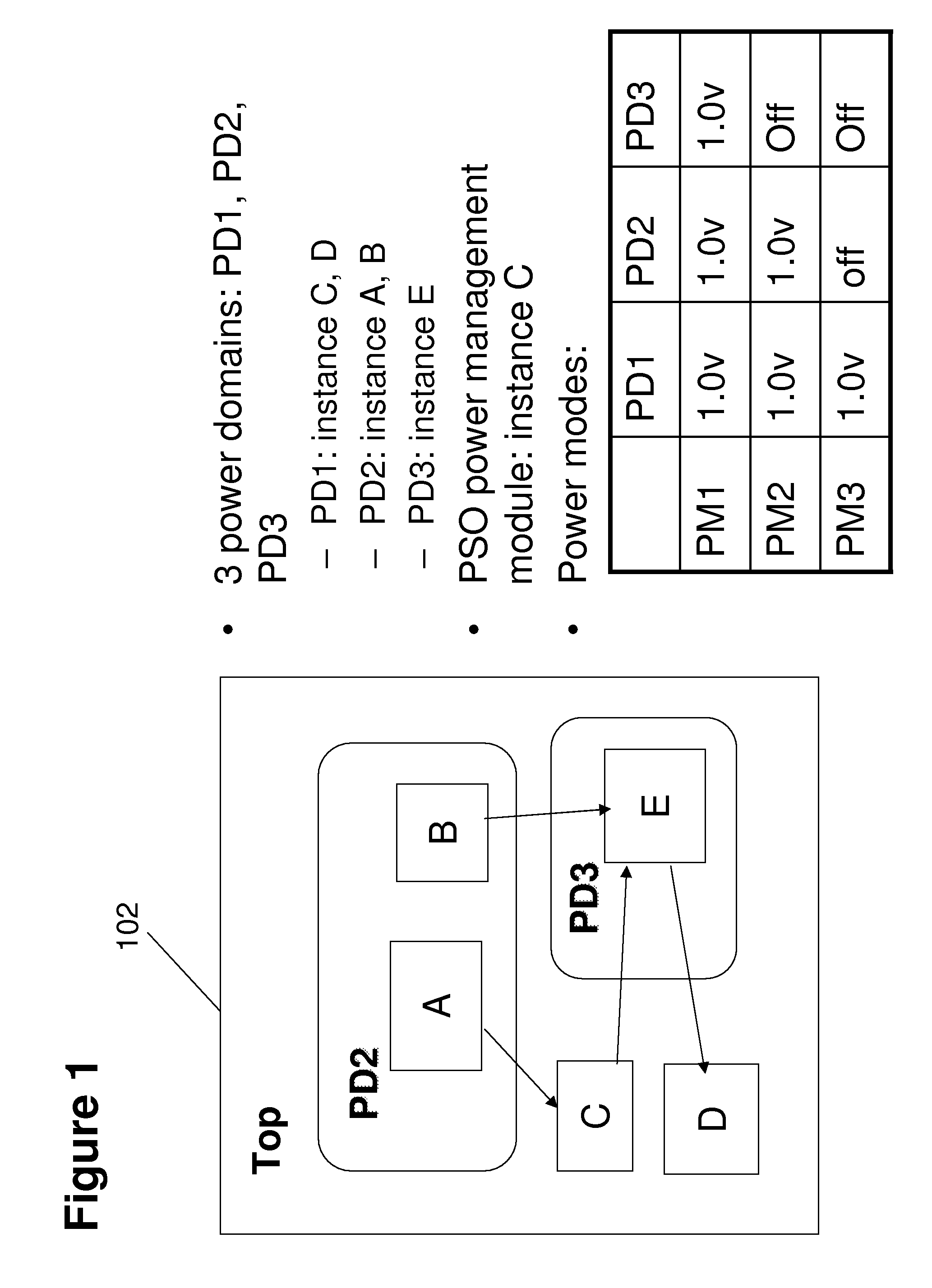Emulation of power shutoff behavior for integrated circuits
a technology of integrated circuits and shutoff behaviors, applied in the direction of electrical/magnetic computing, analogue processes for specific applications, instruments, etc., can solve the problems of not meeting the challenges of conventional emulation systems, unable to capture the intended behavior in the design rtl, and impossible to achieve the effects of software simulators
- Summary
- Abstract
- Description
- Claims
- Application Information
AI Technical Summary
Benefits of technology
Problems solved by technology
Method used
Image
Examples
Embodiment Construction
[0029]FIG. 1 shows an exemplary low-power design 102 for an IC in an embodiment of the present invention. The power design 102 includes a top cell instance “Top”, which has sub-instances A, B, C, D and E. A corresponding CPF (Common Power Format) file indicates there are three power domains: PD1, PD2 and PD3. The instance C and D are in power domain PD1; instance A, B are in power domain PD2; instance E is in power domain PD3. Power management with power shutoff (PSO) is controlled by a power management module in instance C. There are three valid power modes: power mode PM1, PM2 and PM3. In power mode PM1, all three power domains are powered on, in power mode PM2 only power domain PD3 is off, and in power mode PM3 only power domain PD1 is powered on. Functional verification by an emulation system is directed towards verifying the design's PSO behavior in transitions between the power modes. As discussed below in greater detail, relevant PSO features include correct power modes, powe...
PUM
 Login to View More
Login to View More Abstract
Description
Claims
Application Information
 Login to View More
Login to View More - R&D
- Intellectual Property
- Life Sciences
- Materials
- Tech Scout
- Unparalleled Data Quality
- Higher Quality Content
- 60% Fewer Hallucinations
Browse by: Latest US Patents, China's latest patents, Technical Efficacy Thesaurus, Application Domain, Technology Topic, Popular Technical Reports.
© 2025 PatSnap. All rights reserved.Legal|Privacy policy|Modern Slavery Act Transparency Statement|Sitemap|About US| Contact US: help@patsnap.com



